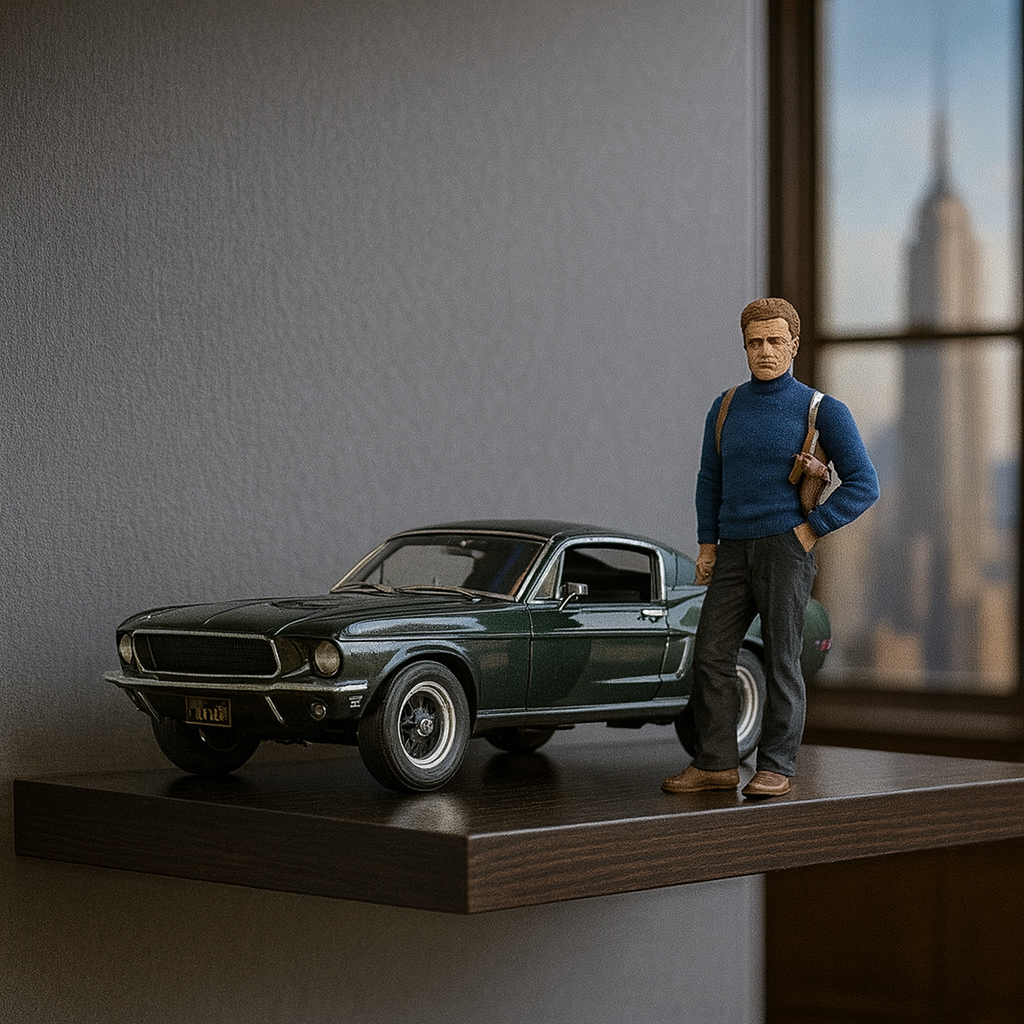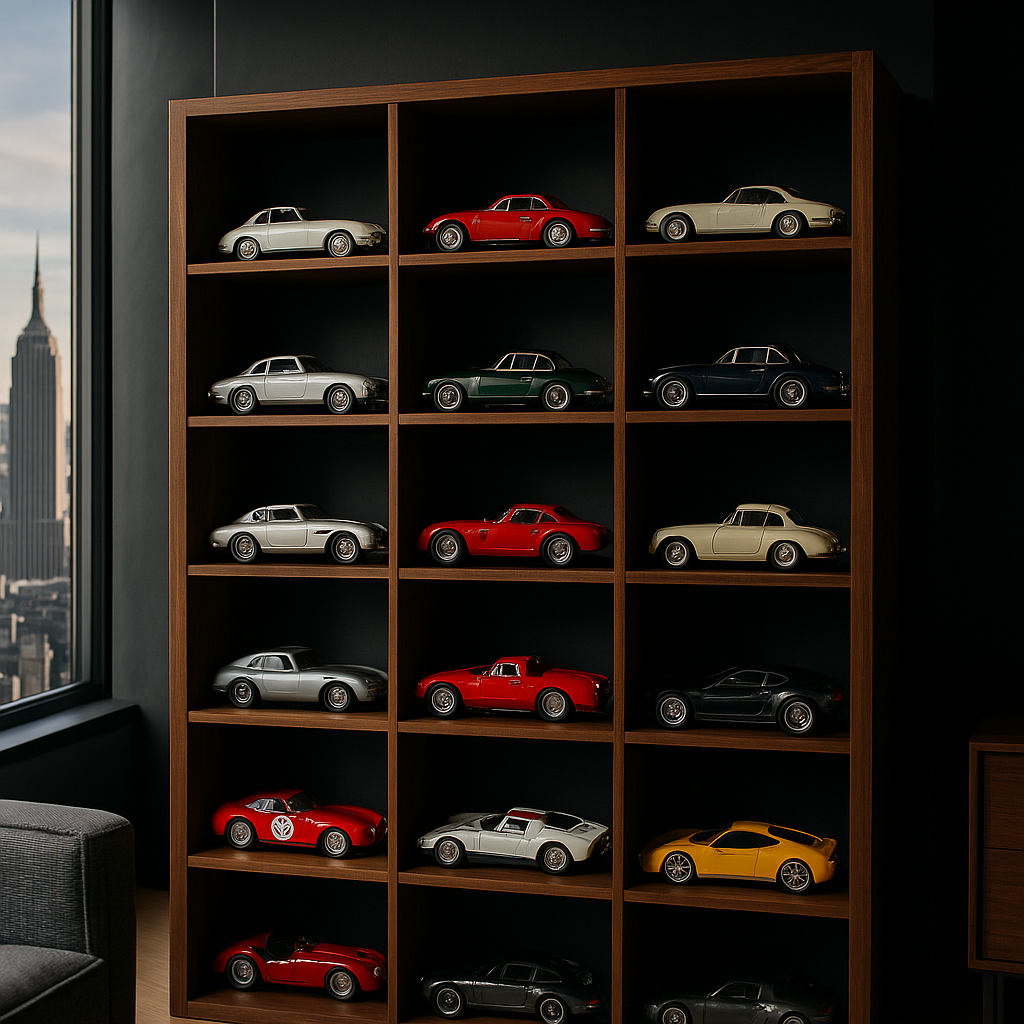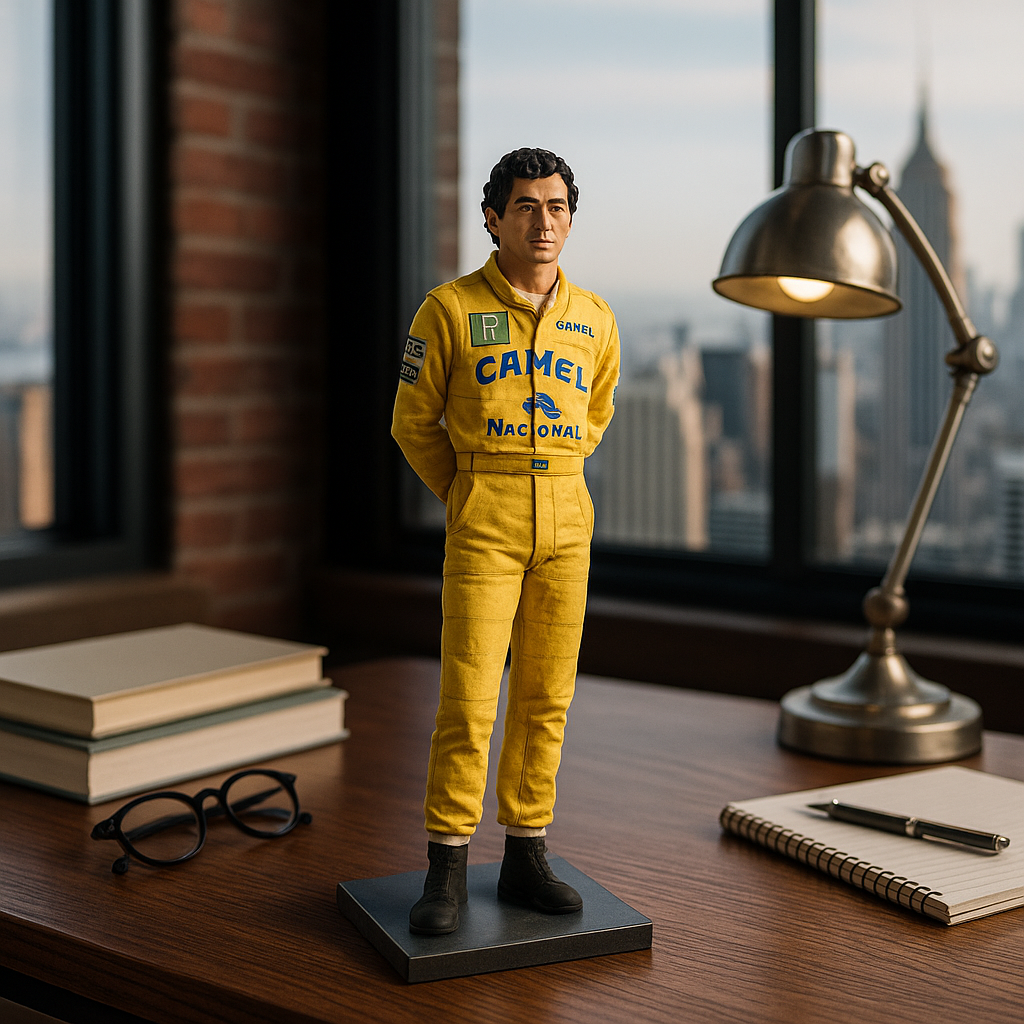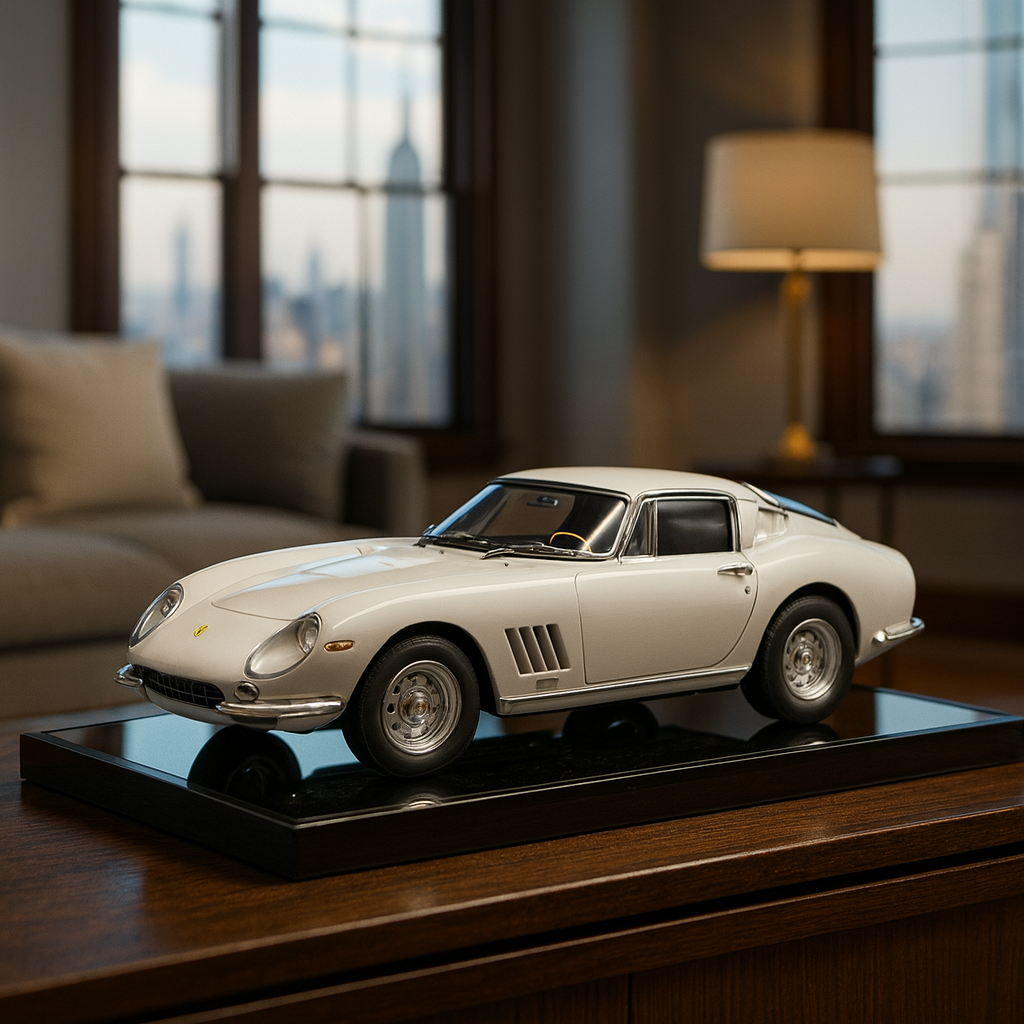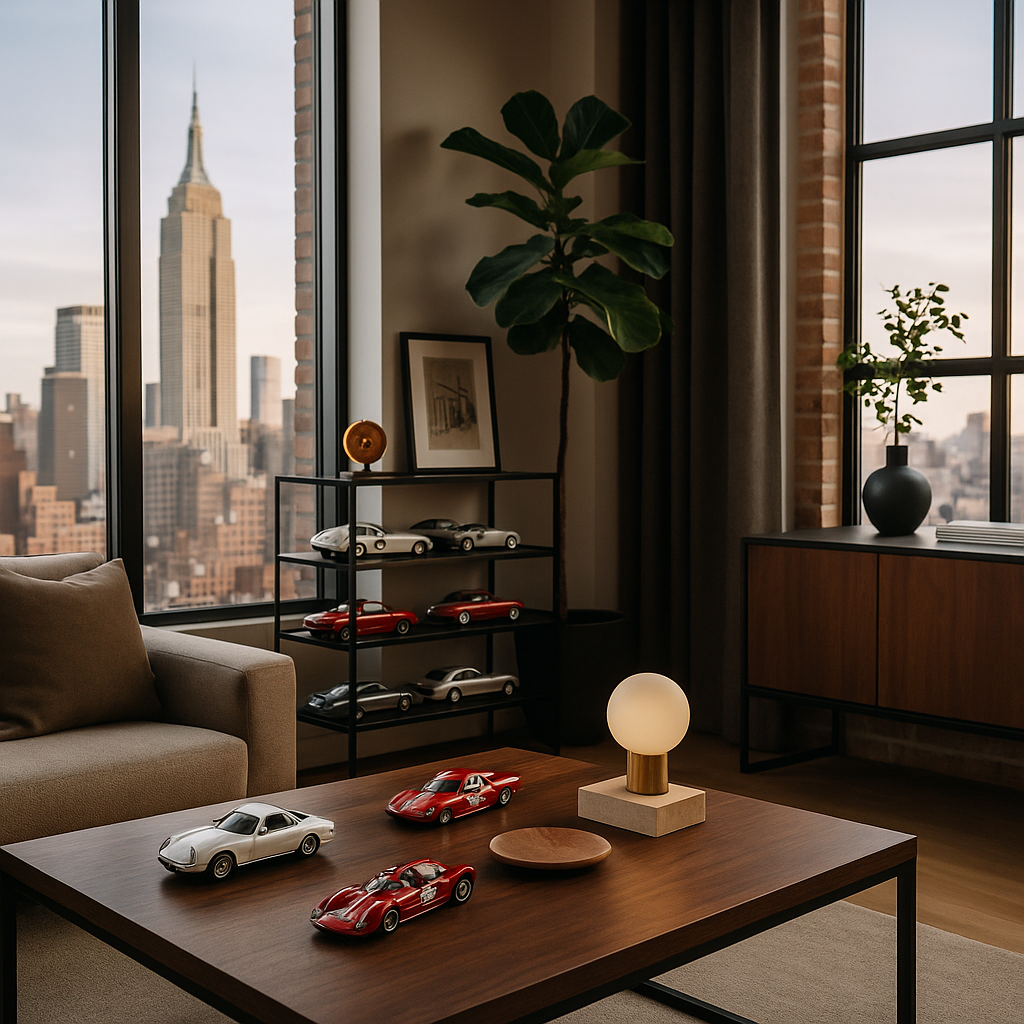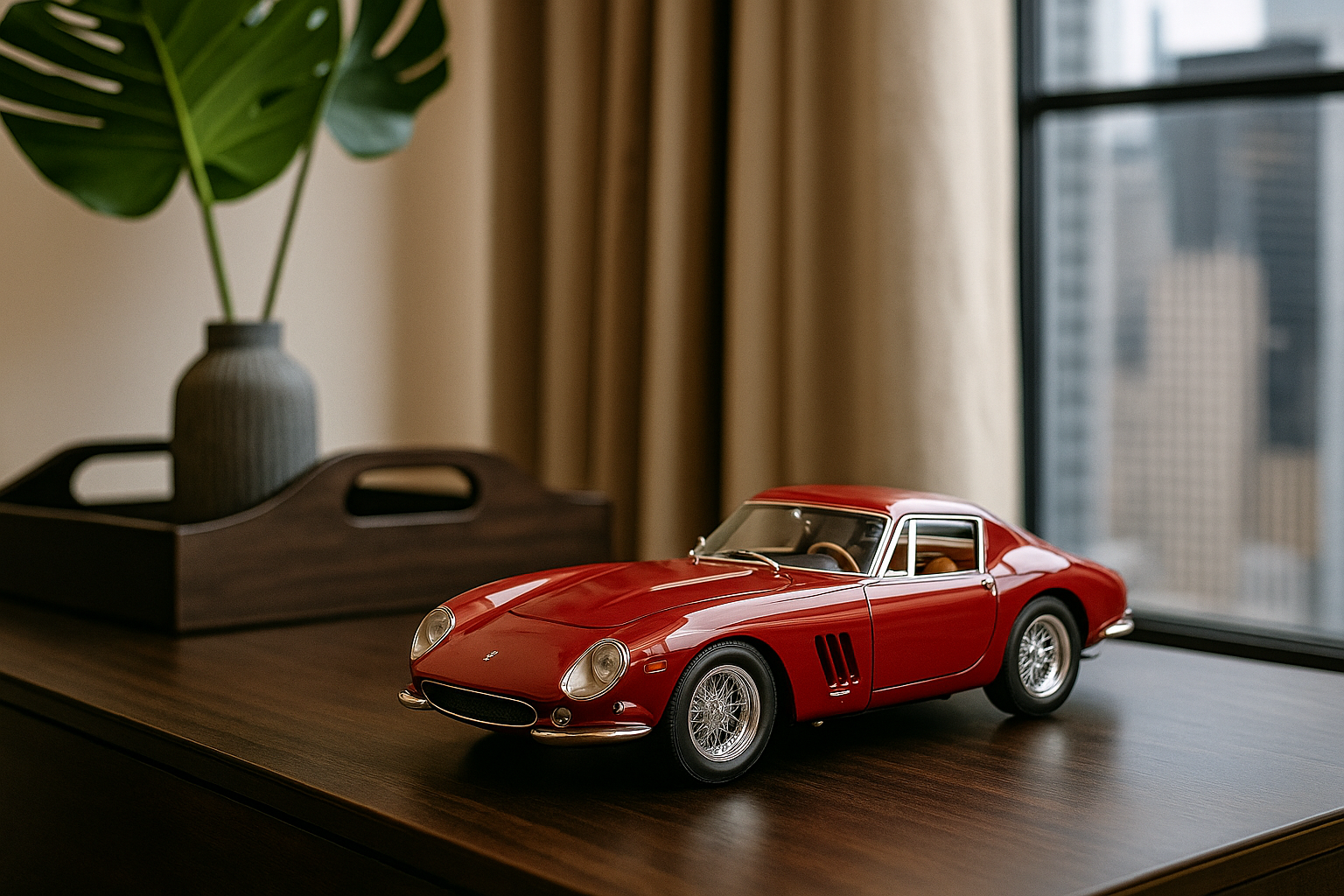
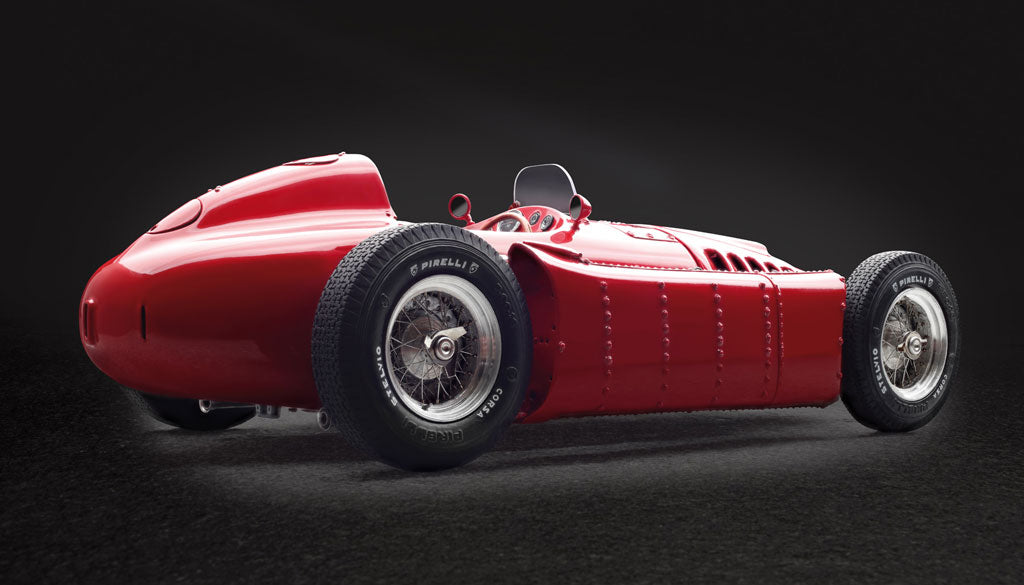
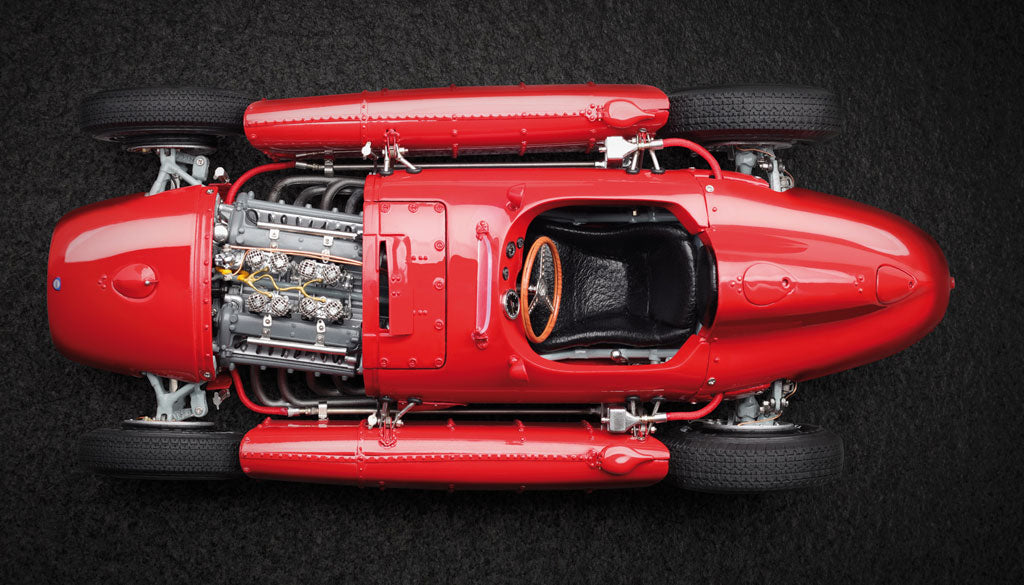
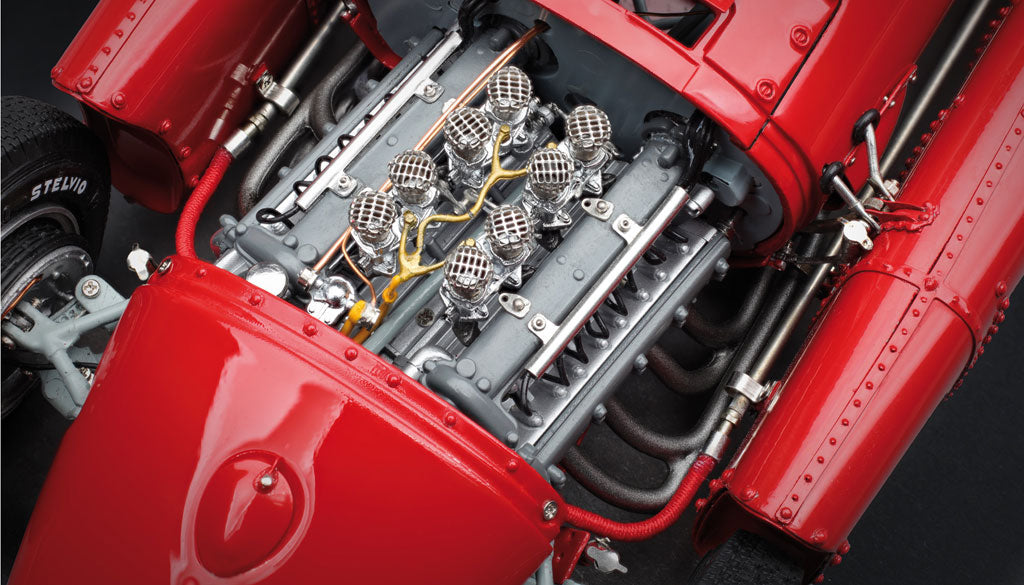
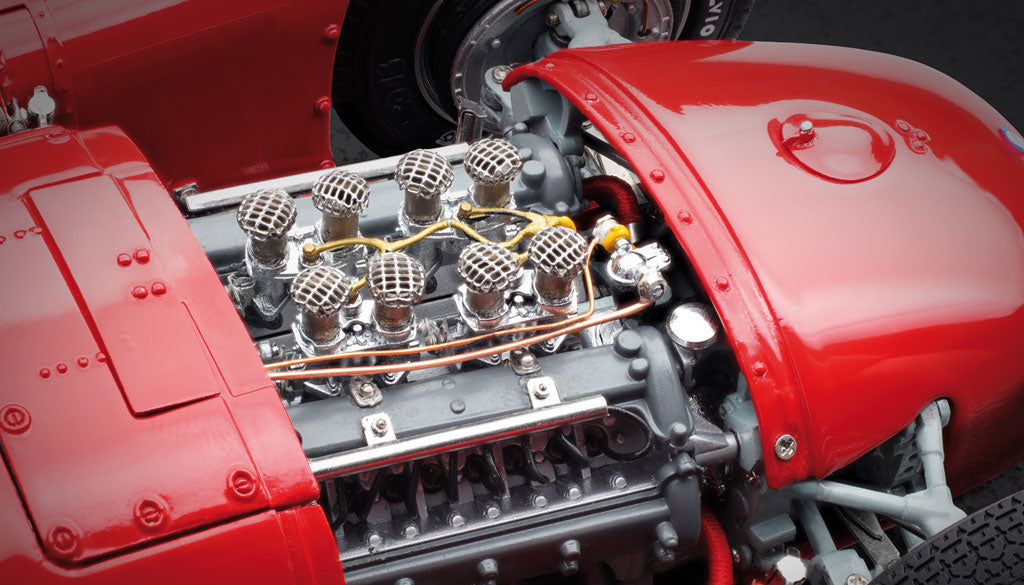
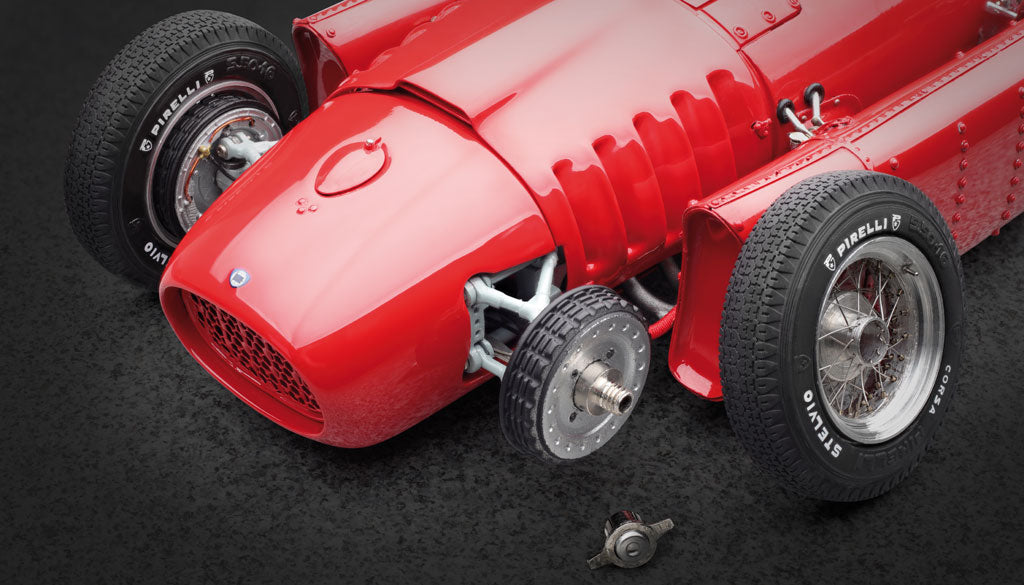
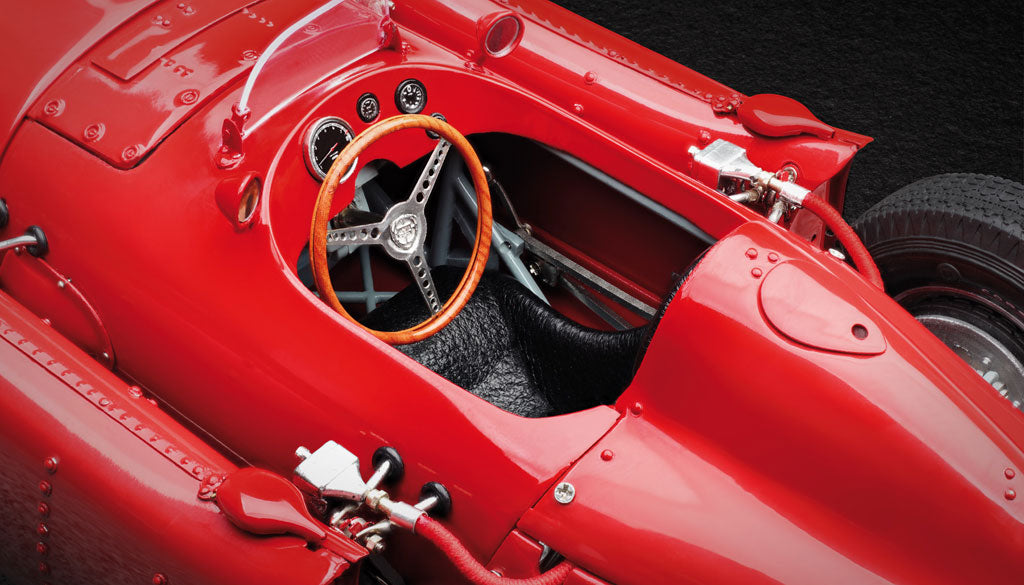
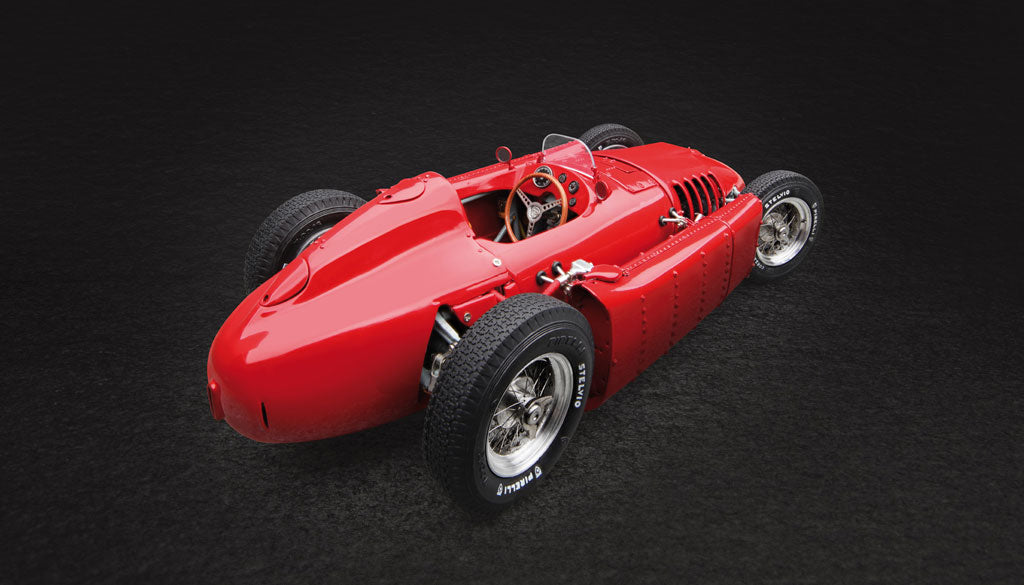

CMC LANCIA D50 1954-1955 CMC M-175

Description
In the 1950s, the D50 was supposed to be Lancia's flagship car in Formula 1, but things turned out differently.
The famous designer Vittorio Jano was commissioned to develop a racing car for Lancia that would be more modern, more beautiful, and, above all, faster than any comparable competitor of the day. Above all, it had to stand up to the dominant Mercedes W 196.
Jano presented an original and highly innovative racing car, which was first presented to the public on February 20, 1954. Vittorio Jano's design was far ahead of its time. The single-seater featured a 2.5-liter V8 engine with a 90° cylinder angle, producing 260 hp, and was installed diagonally to the left of the chassis at an angle of 12° to the vehicle's longitudinal axis.
This arrangement allowed the drive shaft to be relocated from the center of the vehicle to the left side, creating space for a significantly lowered driver's seat. This allowed for a very low design of the single-seater, resulting in aerodynamic advantages.
Another design feature worth highlighting is that the engine served as an integral part of the tubular space frame construction and thus provided a load-bearing component.
Another striking feature that received special attention was the arrangement of the two fuel tanks. Jano placed long, narrow tanks between the free-standing wheels along the left and right outer sides of the body. These tanks provide the car with aerodynamic advantages and, with a combined capacity of 200 liters, allow it to cover an entire race distance without refueling. The idea was that as the fuel level decreases, the handling becomes more stable and more predictable for the driver. This represents a significant advantage over the rear tank typically found on competitors.
With two major names in the racing world, namely Alberto Ascari, two-time GP World Champion in 1952/53, and Luigi Villoresi, the Lancia racing team was able to sign two outstanding drivers. Later, other well-known drivers joined the team.
The Lancia D50 made its racing debut on October 24, 1954, at the Spanish Grand Prix in Barcelona. Alberto Ascari set the fastest time in practice and started from pole position. However, he retired from the race. In 1955, Ascari won two non-World Championship Formula 1 races in Italy early in the season. At the Monaco Grand Prix, Alberto Ascari was leading the race before crashing at the harbor.
The tragic death of Ascari during a private test drive at the Autodrome Nationale Monza and financial difficulties with the racing budget led Lancia to sell the racing department to Ferrari.
The Lancia D50 vehicle fleet was also sold.
Ferrari engineers began systematically redesigning the D50. The modified cars were used in GP races starting in 1956 as the Lancia Ferrari D50.
Juan Manuel Fangio won his fourth world championship.
In a second step, CMC plans to also recreate interesting models of the original Lancia Ferrari D50 from 1956.
Model description
• Metal precision model made of 1,598 parts, hand-assembled.
• Removable and lockable hood
• Movable windshield
• True-to-original replica of the 8-cylinder 90°V engine with all add-on units and complete cable routing/wiring
• Both exhaust pipes in metal design
• Metal wishbone front axle with oil pressure shock absorbers
• De Dion metal rear axle with trailing arms and oil-pressure shock absorbers
• Handcrafted, body-colored stainless steel grille with metal struts
• Detailed replica of the cooling system
• Detailed laying of oil and fuel lines
• Movable tank caps
• Movable oil filler cap
• Cockpit with leather-covered driver's seat and headrest
• Perfectly designed spoked wheels with hand-drawn and nippled stainless steel wire spokes
• Screwable wheel center locks with authentic right/left thread
• Brilliant paintwork in original color
Special accessory: Battery starter trolley with separate external starter
Technical data of the original vehicle
• Monoposto with free-standing wheels built on a tubular frame
• 8 cylinder 90°V engine as a load-bearing chassis element
• 2 valves per cylinder, controlled by two overhead camshafts
• Dry sump lubrication
• Mixture preparation with four Solex PII flat-flow double carburettors
• Dual ignition (two spark plugs per cylinder)
• Transversely mounted five-speed gearbox behind the driver
| Bore x stroke: | 73.6 x 73.1 mm |
| Engine capacity: | 2,488 cc |
| Perfomance: | 260 hp at 8,000 rpm |
| Top speed: | 300 km/h (depending on rear axle ratio) |
| Wheelbase: | 2,280 mm |
| Front/rear track: | 1,294 / 1,330 mm |
| Total length: | 3. 570 mm |
| Total width: | 1,600 mm |
| Total height: | 1,001 mm |
| Empty weight: | 620 kg |
Notice
In the 1950s, the D50 was supposed to be Lancia's flagship car in Formula 1, but things turned out differently.
The famous designer Vittorio Jano was commissioned to develop a racing car for Lancia that would be more modern, more beautiful, and, above all, faster than any comparable competitor of the day. Above all, it had to stand up to the dominant Mercedes W 196.
Jano presented an original and highly innovative racing car, which was first presented to the public on February 20, 1954. Vittorio Jano's design was far ahead of its time. The single-seater featured a 2.5-liter V8 engine with a 90° cylinder angle, producing 260 hp, and was installed diagonally to the left of the chassis at an angle of 12° to the vehicle's longitudinal axis.
This arrangement allowed the drive shaft to be relocated from the center of the vehicle to the left side, creating space for a significantly lowered driver's seat. This allowed for a very low design of the single-seater, resulting in aerodynamic advantages.
Another design feature worth highlighting is that the engine served as an integral part of the tubular space frame construction and thus provided a load-bearing component.
Another striking feature that received special attention was the arrangement of the two fuel tanks. Jano placed long, narrow tanks between the free-standing wheels along the left and right outer sides of the body. These tanks provide the car with aerodynamic advantages and, with a combined capacity of 200 liters, allow it to cover an entire race distance without refueling. The idea was that as the fuel level decreases, the handling becomes more stable and more predictable for the driver. This represents a significant advantage over the rear tank typically found on competitors.
With two major names in the racing world, namely Alberto Ascari, two-time GP World Champion in 1952/53, and Luigi Villoresi, the Lancia racing team was able to sign two outstanding drivers. Later, other well-known drivers joined the team.
The Lancia D50 made its racing debut on October 24, 1954, at the Spanish Grand Prix in Barcelona. Alberto Ascari set the fastest time in practice and started from pole position. However, he retired from the race. In 1955, Ascari won two non-World Championship Formula 1 races in Italy early in the season. At the Monaco Grand Prix, Alberto Ascari was leading the race before crashing at the harbor.
The tragic death of Ascari during a private test drive at the Autodrome Nationale Monza and financial difficulties with the racing budget led Lancia to sell the racing department to Ferrari.
The Lancia D50 vehicle fleet was also sold.
Ferrari engineers began systematically redesigning the D50. The modified cars were used in GP races starting in 1956 as the Lancia Ferrari D50.
Juan Manuel Fangio won his fourth world championship.
In a second step, CMC plans to also recreate interesting models of the original Lancia Ferrari D50 from 1956.
Model description
• Metal precision model made of 1,598 parts, hand-assembled.
• Removable and lockable hood
• Movable windshield
• True-to-original replica of the 8-cylinder 90°V engine with all add-on units and complete cable routing/wiring
• Both exhaust pipes in metal design
• Metal wishbone front axle with oil pressure shock absorbers
• De Dion metal rear axle with trailing arms and oil-pressure shock absorbers
• Handcrafted, body-colored stainless steel grille with metal struts
• Detailed replica of the cooling system
• Detailed laying of oil and fuel lines
• Movable tank caps
• Movable oil filler cap
• Cockpit with leather-covered driver's seat and headrest
• Perfectly designed spoked wheels with hand-drawn and nippled stainless steel wire spokes
• Screwable wheel center locks with authentic right/left thread
• Brilliant paintwork in original color
Special accessory: Battery starter trolley with separate external starter
Technical data of the original vehicle
• Monoposto with free-standing wheels built on a tubular frame
• 8 cylinder 90°V engine as a load-bearing chassis element
• 2 valves per cylinder, controlled by two overhead camshafts
• Dry sump lubrication
• Mixture preparation with four Solex PII flat-flow double carburettors
• Dual ignition (two spark plugs per cylinder)
• Transversely mounted five-speed gearbox behind the driver
| Bore x stroke: | 73.6 x 73.1 mm |
| Engine capacity: | 2,488 cc |
| Perfomance: | 260 hp at 8,000 rpm |
| Top speed: | 300 km/h (depending on rear axle ratio) |
| Wheelbase: | 2,280 mm |
| Front/rear track: | 1,294 / 1,330 mm |
| Total length: | 3. 570 mm |
| Total width: | 1,600 mm |
| Total height: | 1,001 mm |
| Empty weight: | 620 kg |


